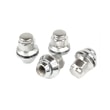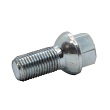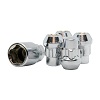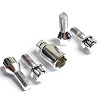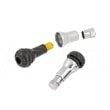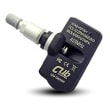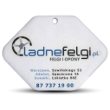Mercedes Steer-by-Wire: No more traditional steering wheel
Steer-by-wire is an innovative steering system that eliminates the mechanical connection between the steering wheel and the wheels. Instead of a traditional steering shaft, signals from the steering wheel are sent electronically to a control unit that manages the movement of the wheels.
Contents:
- How does the steer-by-wire system work?
- Modern look - yoke handlebar
- Advantages of the steer-by-wire system
- Controversy and safety
- Testing new technology
How does the steer-by-wire system work?

- No physical connection – The steering wheel is not mechanically connected to the wheels, instead the signals are transmitted electronically.
- Steering Rack Unit (SRU) - connected to the wheels, interprets the signal and transmits it to the actuator that performs the steering movement of the wheels.
- A spring-loaded feedback unit (SFU) has been installed - it is responsible for generating resistance and feedback so that the driver feels a natural driving experience
- Safety architecture – The system has dual power supplies, redundant signal paths and additional actuators, ensuring safety even in the event of a failure.
- Integration with other systems – Steer-by-wire works with the rear axle steering system and the ESP system, allowing you to maintain control of the vehicle even in emergency situations.
Modern look - yoke handlebar
MERCEDES is also introducing a yoke-style steering wheel inspired by aviation and racing, similar to that seen in Tesla models. Combined with the steer-by-wire system, the yoke-style steering wheel allows for a new, more relaxed handling and improved driver comfort. It allows the driver to move their hands freely when making turns.

Advantages of the steer-by-wire system
✅ Exceptional driving experience and precision - MERCEDES aims to deliver a completely new driving experience with its steer-by-wire system, combining exceptional precision with intuitive response. This means drivers will feel more confident and have better control of the vehicle in a variety of conditions.
✅ Variable steering response – the ability to adjust steering wheel response to different driving modes, depending on speed and driving conditions. For example, at low speeds (e.g., when parking), the steering wheel will require significantly less turn to fully lock the wheels, while at high speeds, it will provide greater stability.
✅ Vibration Reduction – MERCEDES emphasizes that their system almost completely eliminates vibrations and noise transmitted to the steering wheel from road irregularities. This significantly increases travel comfort, especially on longer journeys.
✅ Safety – MERCEDES places a huge emphasis on safety. Their steer-by-wire system features a redundant architecture , meaning it has dual signal paths, dual actuators, and a backup power supply. In the unlikely event of a complete failure of the main system, vehicle control is still possible, for example, via rear-axle steering and precise brake interventions on individual wheels via the ESP system.
✅ Parking made easier – thanks to variable gear ratios and reduced effort required to turn, parking becomes much simpler and no longer requires "changing hands" on the steering wheel.
✅ Flexibility in interior design - The lack of a steering column allows for a more modern and spacious interior, which translates into:
- more space in the cabin, especially for legs.
- better visibility of the displays and the entire dashboard.
- easier entry and exit from the vehicle.
- new interior design options, including more relaxed seating positions, which is particularly important in the context of future autonomous driving systems.
Controversy and safety
The new "steer-by-wire" technology is controversial, primarily due to concerns about safety and vehicle control. Users are concerned about potential problems with the system in emergency situations, such as power loss, and potential delays in the car's response to driver inputs. MERCEDES , a leader in the automotive market, is renowned for its reliability and safety, and in this case, it also promises maximum safety and an improved driving experience. The system features two independent control systems that monitor and control each other. If one system malfunctions, the other takes over steering control. The connections between the steering wheel and the steering system are also doubled to prevent failures caused by damaged cables. The company assures that the system is equipped with redundancy , i.e., dual actuators and backup power units, to increase reliability. Although Mercedes' steer-by-wire is a promising technology, potential safety controversies require further research and testing.
Testing new technology
New automotive technology always holds promise. But how can we ensure that this promise is fulfilled, and that the systems that are meant to revolutionize driving are not only innovative but above all reliable and safe? MERCEDES-Benz posed this question in the context of its steer-by-wire system and answered it in the only way possible: through millions of kilometers of intensive testing. Let's take a look at what this in-depth study entailed.

- Track tests
Here, Mercedes engineers simulated extreme road conditions, from sharp turns to sudden changes in road surface. They tested how the system reacted to high speeds, intense maneuvers, and even how it behaved in controlled crash scenarios. This is a testing ground where safety and reliability are tested to the limit.
- Road tests
A million kilometers isn't just a number—it's thousands of hours spent on the road in real-world conditions. MERCEDES tested the system at various times of day and night, in all weather conditions—from blazing sun to pouring rain to snow. It was tested on highways, in city traffic, and on winding suburban roads to ensure it could handle whatever life threw at it.
- Performance tests
The focus here was on how steer-by-wire improves driving dynamics. Does it increase directional stability? How does it affect the vehicle's lateral agility? Another key aspect was its interaction with the advanced rear-wheel steering system, already a hallmark of some Mercedes models, such as the EQS. The goal was to create a perfectly coordinated orchestra, with every element contributing to optimal handling.
- Safety tests
This aspect goes beyond the technology itself. MERCEDES monitored driver behavior, analyzing steering wheel movements and driving style. Why? To use this data to detect signs of fatigue and warn the driver in good time when a break is needed. This demonstrates how technology supports safety, not only through precision but also through attention to the driver's well-being.
- Reliability tests
The system had to prove its resilience to external factors. It was tested in extreme temperatures, from freezing to scorching, and in a variety of weather conditions to ensure that the steer-by-wire system would function flawlessly regardless of the climate.
All of these rigorous tests, conducted, among others, on EQS models—potentially the first vehicles to feature this innovation—allowed Mercedes to confidently state: the steer-by-wire system is ready for anything. This is not only a technological leap forward, but also a testament to the commitment to safety and driver experience that have always been at the heart of the brand's philosophy.
Summary
Mercedes' steer-by-wire technology is a significant step toward the future of motoring, offering an innovative driving experience thanks to the elimination of mechanical linkages and the introduction of a modern steering wheel. Enhanced safety and comfort are achieved through advanced redundancy systems and adaptive steering settings. New design options enable more spacious and ergonomic vehicle interiors.
Recommended

4x rims Kute 19 Forged for MERCEDES E W210 W211 W212 W213 Style Maybach SLC - HX09F


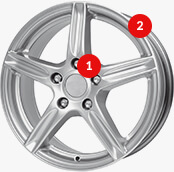

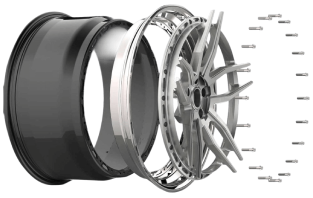
 Modern design
Modern design Perfect fit
Perfect fit High durability
High durability Free shipping within 24 hours
Free shipping within 24 hours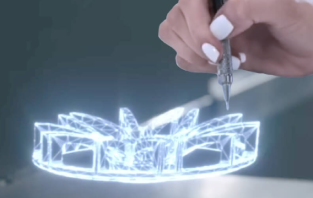
 Individual project
Individual project Dedicated caregiver
Dedicated caregiver
